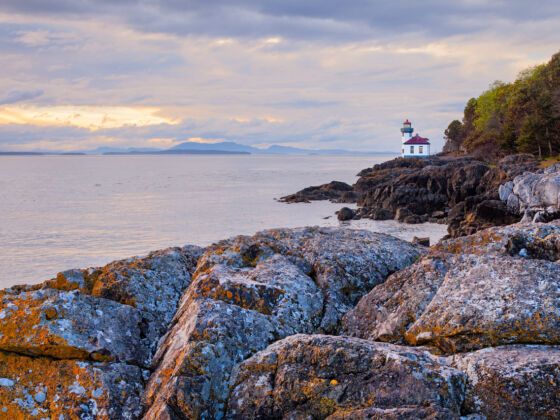WASHINGTON HAS IT ALL: shrub-steppe landscape in the east, forested mountains, rugged coastline with big archipelagos and bays, sinuous river valleys. The State Parks might not be as well known to visitors as the Olympic Peninsula, but they’re more than worth visiting.
Palouse Falls
The small Palouse Falls State Park is in the south-east corner of the state, away from major routes. For this reason, it is not the most popular of the State’s parks yet it offers some of Washington’s most beautiful views. The Palouse River created a canyon along its sweeping course. At one point, the river suddenly drops 198 feet in an arena-shaped formation. The falls are hidden from the upriver course, right behind a sharp 90° right turn. The waterfall falls in a gentle arc and the river continues in the now deeper canyon. The canyon has tall steps of white and brownish rock exposing millennia of geological formations. Their color alternates with the shrubs’ greens.

